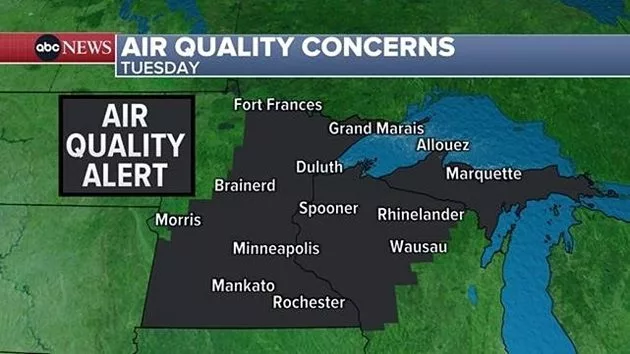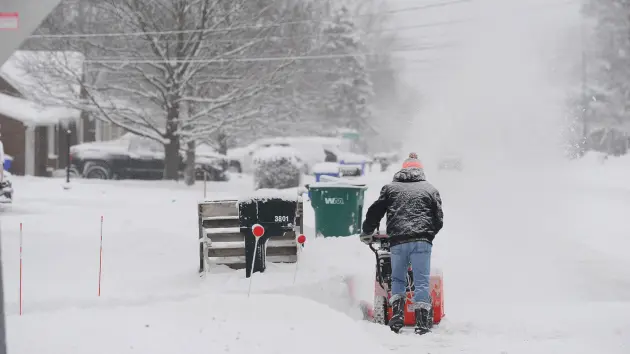
(NEW YORK) — Smoke from raging wildfires in Canada continues to bring dangerous air quality conditions to parts of the northern United States, with hazy and smoky skies also possible for the East and South.
As of Tuesday, there are 208 active wildfires burning in Canada, with 107 of these considered to be “out of control,” meaning fires that are being observed and assessed, but not immediately suppressed, according to the Canadian Interagency Forest Fire Centre.
The haze from the wildfires — which was seen all the way to the Gulf Coast on Monday — will continue to travel into the East and the South on Tuesday, bringing a lightly tinted sunset in the Northeast.
There are not currently any air quality alerts for the East or South since the smoke is expected to stay below the surface, but potentially dangerous conditions are expected in Minnesota, Wisconsin and the Upper Peninsula of Michigan.
On Tuesday morning, Minneapolis was among the top 10 worst air quality conditions in the world. While the entire state of Minnesota is under an air quality alert until Wednesday afternoon, eastern Minnesota is expected to reach an “unhealthy” air quality index, or level four of six on the AQI Index.
In these conditions, most people could experience irritated eyes, nose and throat, coughing, chest tightness or shortness of breath, the pollution control agency said.
Rain on Tuesday should alleviate the poor air quality briefly, but there is a chance for additional heavy smoke later Tuesday afternoon, especially from Duluth to Minneapolis.
Air quality conditions should improve on Wednesday across Minnesota as the smoke continues to move east.
As of Tuesday, the areas of Canada with the most fires include British Columbia with 74 and Alberta with 16, according to the CIFFC.
Last week, the provinces of Saskatchewan and Manitoba declared state of emergencies due to the fires, with around 17,000 residents already evacuated, according to The Associated Press.
The combination of dry conditions and “little-to-no precipitation” will continue to feed the flames and make it difficult for officials to manage the fires, Saskatchewan Public Safety said on Sunday.
During a press conference on Monday, Saskatchewan Public Safety discouraged any nonessential travel due to the significant fire activity.
Aircraft and dozens of personnel from other Canadian provinces and the United States — including Arizona, Oregon and Alaska — are being sent to help fight the wildfires, according to the Saskatchewan Premier Scott Moe.
Moe said last week there has been a “significant lack of moisture” in the northern parts of the province, causing “over 200 wildfires” in Saskatchewan this spring.
Copyright © 2025, ABC Audio. All rights reserved.



